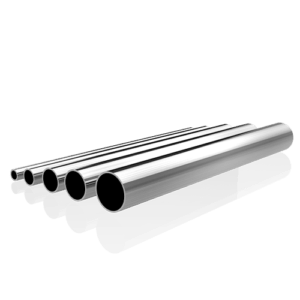Introduction

Stainless steel pipe fittings are integral components in various industries due to their exceptional properties such as durability, corrosion resistance, and versatility. This blog delves into the wide-ranging applications and advantages of stainless steel pipe fittings, emphasizing their crucial role in modern industrial processes.
Properties of Stainless Steel Pipe Fittings
Stainless steel pipe fittings are renowned for several key properties that make them ideal for industrial use:
- Corrosion Resistance: Stainless steel alloys like 304 and 316 offer excellent resistance to corrosion, making them suitable for harsh and corrosive environments such as chemical processing plants and offshore oil rigs.
- Strength and Durability: They exhibit high strength and durability, capable of withstanding high pressures and temperature variations, ensuring long-term reliability.
- Temperature Resistance: Stainless steel fittings maintain their mechanical properties over a wide range of temperatures, from cryogenic temperatures to elevated temperatures encountered in various industrial processes.
- Aesthetic Appeal: They provide a clean, polished appearance that is not only functional but also aesthetically pleasing, making them suitable for visible installations in architectural and decorative applications.
Types of Stainless Steel Pipe Fittings
Stainless steel pipe fittings come in various types, each serving specific purposes in piping systems:
- Elbows and Bends: Used to change the direction of pipelines, accommodating bends ranging from 45 degrees to 90 degrees.
- Tees: Allow pipelines to branch out into multiple directions, facilitating complex piping configurations.
- Reducers: Connect pipes of different diameters, ensuring smooth flow and minimizing pressure drop.
- Couplings: Join two pipes of the same diameter together, providing a leak-proof connection.
- Flanges: Provide a robust method of connecting pipes, valves, or pumps, often used in high-pressure applications.
- Caps and Plugs: Seal the end of pipes to prevent leakage and contamination.
Applications in Industries
Stainless steel pipe fittings find extensive applications across various industries due to their reliability and performance:
- Oil and Gas: Used in both upstream and downstream operations, stainless steel fittings resist corrosion from harsh chemicals and saline environments, crucial for offshore platforms and pipelines.
- Chemical Processing: Ideal for handling corrosive chemicals and fluids at high temperatures, ensuring safety and durability in chemical plants and refineries.
- Food and Beverage: Stainless steel fittings meet stringent hygiene standards, making them suitable for food processing and pharmaceutical industries where cleanliness and corrosion resistance are paramount.
- Water Treatment: Used in municipal water systems, desalination plants, and wastewater treatment facilities, where durability and resistance to corrosion are essential for long-term operation.
- Construction: Stainless steel fittings are employed in structural applications, providing reliable performance in building infrastructure and architectural designs.
Advantages of Stainless Steel Pipe Fittings
The advantages of using stainless steel pipe fittings include:
- Longevity: Stainless steel fittings have a long service life, reducing maintenance costs and downtime.
- Corrosion Resistance: They resist corrosion even in aggressive environments, maintaining their structural integrity over time.
- Hygienic Properties: Smooth surfaces prevent bacterial growth, making them suitable for sanitary applications in food processing and healthcare facilities.
- Environmental Sustainability: Stainless steel is recyclable, contributing to sustainability efforts by reducing material waste and environmental impact.
- Cost-effectiveness: Although initial costs may be higher than other materials, the long-term durability and low maintenance requirements of stainless steel fittings provide cost savings over their lifespan.
Installation and Maintenance
Proper installation and maintenance practices are crucial for maximizing the performance and longevity of stainless steel pipe fittings:
- Pre-installation Inspection: Check fittings for defects and ensure compatibility with piping specifications.
- Correct Installation Techniques: Use appropriate tools and techniques to avoid damage and ensure a secure, leak-free connection.
- Regular Inspection and Maintenance: Periodic checks for leaks, corrosion, or wear, and prompt repairs or replacements as needed to prevent costly downtime.
Case Studies
Case Study 1: Oil Refinery Application
In a new oil refinery construction project, stainless steel pipe fittings were selected for their corrosion resistance and durability in handling crude oil and various chemicals. The fittings’ ability to withstand high pressures and temperatures contributed to the reliability and safety of the refinery’s operations.
Case Study 2: Food Processing Facility
A food processing plant upgraded to stainless steel fittings to comply with hygiene standards and ensure product safety. The fittings’ smooth surface and resistance to corrosion facilitated easy cleaning and maintenance, crucial for maintaining sanitary conditions in food production.
Comparison of Stainless Steel Grades
| Grade | Corrosion Resistance | Temperature Resistance | Applications |
|---|---|---|---|
| 304 | Excellent | Good | General purpose, food processing |
| 316 | Superior | Excellent | Chemical processing, marine environments |
Environmental Impact

Stainless steel pipe fittings support environmental sustainability:
- Recyclability: Stainless steel is fully recyclable at the end of its useful life, reducing landfill waste and conserving resources.
- Longevity and Durability: The durable nature of stainless steel fittings minimizes the need for frequent replacements, further reducing environmental impact and lifecycle costs.
Conclusion
Stainless steel pipe fittings are indispensable in industrial applications due to their unmatched combination of durability, corrosion resistance, and versatility. Understanding their properties, types, and applications is essential for optimizing piping systems in various industries, ensuring efficient and reliable operation.
FAQ
What are stainless steel pipe fittings made of?
Stainless steel pipe fittings are typically made from grades such as 304 (for general applications) or 316 (for enhanced corrosion resistance).
Where are stainless steel pipe fittings commonly used?
They are used in industries such as oil and gas, chemical processing, food and beverage, water treatment, and construction.
How do you install stainless steel pipe fittings?
Proper installation involves selecting the correct size and type of fitting, ensuring cleanliness, using appropriate tools, and following manufacturer guidelines for sealing and securing fittings.
Are stainless steel pipe fittings suitable for high-pressure applications?
Yes, stainless steel fittings are capable of withstanding high pressures and temperature extremes, making them ideal for demanding industrial environments.
